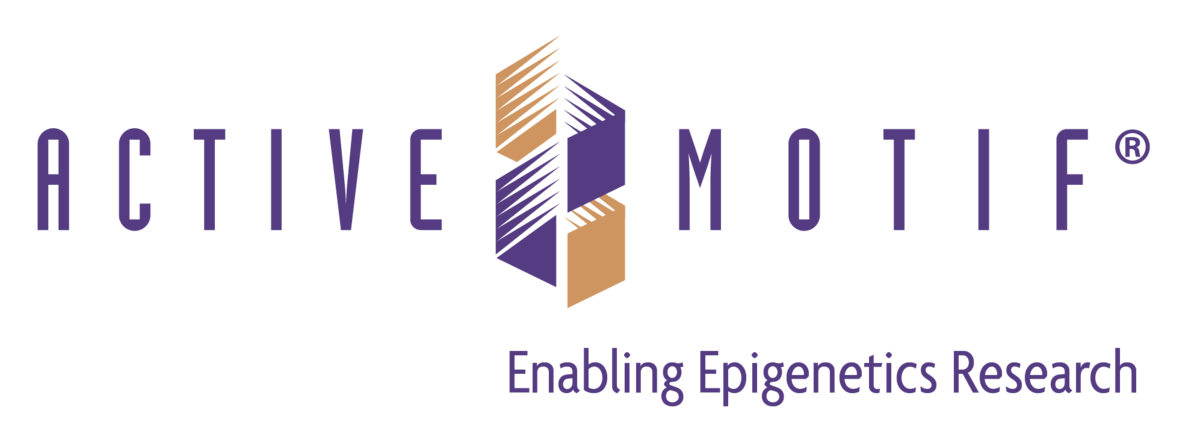Introduction: How Does Transcriptional Machinery Co-option Promote Leukemogenesis?
The transcriptional co-activator bromodomain containing protein 4 (BRD4) has been linked to cancer development due to the ability of this important transcriptional co-factor to aid the establishment of cancer-associated gene expression programs (Zuber et al.). The bromodomain of BRD4 recognizes acetylated lysines - such as those on the “tails” of histones - while an extra terminal domain mediates protein-protein interactions. Tumor cells that depend on BRD4 display increased BRD4 binding and high levels of histone 3 lysine 27 acetylation (H3K27ac; a histone modification catalyzed by the histone acetyltransferase (HAT) p300; Weinert et al.) at the enhancers/super-enhancers of cancer-associated genes; however, the question remains as to how the transcriptional machinery present in normal cells becomes co-opted to selectively modulate the regulatory elements of cancer-associated genes and thereby affect their transcription.
BRD4-dependent tumors include T-cell acute lymphoblastic leukemia (T-ALL) (Piya et al.), an aggressive malignancy of thymocytes (an immature form of T cells). Activating mutations in the NOTCH1 gene occur in over half of human T-ALL cases (Weng et al.); in these cases, BRD4 cooperates with a constitutively generated/stabilized intracellular NOTCH1 domain (ICN1) (Weng et al.) and proto-oncogene MYC to initiate/sustain leukemogenesis (Piya et al.) and mediate chemoresistance (Knoechel et al.). BET inhibitors can release BRD4 from chromatin, downregulate T-ALL gene expression, and reduce cell survival (Roderick et al., King et al., and Knoechel et al.); however, the ever-increasing threat of resistance to BRD4 inhibitors (Liu et al. and Rathert et al.) has highlighted the need to understand BRD4 dependency in T-ALL to a greater extent.
A recent study from researchers led by Stanley Adoro (National Cancer Institute at the National Institutes of Health) now reports on the requirement for a nuclear fraction of the ESCRT (endosomal sorting complex required for transport) protein CHMP5 (Charged multivesicular body protein-5) in T-ALL-associated epigenetic and transcriptional programming via the recruitment of BRD4 and p300 to the enhancers and super-enhancers driving T-ALL-associated gene expression (Umphred-Wilson et al.). This new study, published in Nature Communications, also reveals how CHMP5 loss impairs T-ALL-associated gene expression and abrogates T-ALL initiation caused by activated NOTCH1 in vivo, thereby highlighting a potentially novel target for treating this form of leukaemia. Can we take down T-ALL by stopping CHMP5 from “monkeying around” in cancer cells?
How does CHMP5 “Monkey Around” with BRD4 and p300 in Cancer Cells?
CHMP5 forms part of the cytosolic ESCRT-III machinery that normally helps to induce membrane scission (Azmi et al.). While the ESCRT machinery has robust links to cancer, the individual contributions of ESCRT proteins to tumorigenesis remain unclear (Liu et al. and Vietri et al.). Recent studies have provided evidence that CHMP5 functions independently of ESCRT (Greenblatt et al. and Adoro et al.), while another has revealed that pro-tumorigenic factors can “hijack” the same factors promoting normal thymocyte development to initiate and maintain T-ALL (Belver & Ferrando). Overall, these findings prompted the authors to investigate a potentially novel role for CHMP5 in T cell leukemogenesis.
Briefly, the authors employed human and murine T-ALL models to reveal that increased levels of CHMP5 prompted the “hijacking” of transcriptional machinery, prompting the increased recruitment of BRD4 and p300 to the enhancers and super-enhancers of genes that underly T-ALL initiation and maintenance. Increased CHMP5 levels also prompted increased H3K27ac deposition at these regulatory regions and increased gene expression. As p300 catalyzes H3K27ac at enhancer elements and BRD4 promotes the HAT activity of p300, the p300-BRD4 interaction likely functions as a feed-forward loop that further enriches BRD4 occupancy at enhancers and super-enhancers thanks to the activity of CHMP5. Importantly, CHMP5 depletion significantly downregulated critical T-ALL-associated gene expression. Notably, previous studies had reported the cytosolic location of ESCRT proteins (Vietri, Radulovic, & Stenmark); however, this study provided evidence for the active import of CHMP5 into the nucleus and the need for chromatin interactions to carry out the novel function described in this fascinating study.
The authors also presented additional evidence that supported the significance of CHMP5 function in T-ALL pathogenesis. Their study revealed that i) CHMP5 deletion in thymocytes suppressed the oncogenic ICN1-mediated induction of T-ALL development in mice, ii) CHMP5 deficiency in activated NOTCH1-driven human T-ALL impaired the T-ALL gene program, iii) CHMP5 displayed elevated expression across T-ALL subtypes, iv) higher CHMP5 expression correlated with worse T-ALL patient survival, and v) CHMP5 deficiency synergistically improved chemotherapy efficacy (suggesting that CHMP5 drives chemoresistance mechanisms in T-ALL).
CHMP5: Stop Monkeying Around with BRD4 and p300!
Overall, these data highlight how the ESCRT protein CHMP5 positively regulates the BRD4-p300-dependent transcription of T-ALL genes to enable leukemia initiation and maintenance. As such, the therapeutic depletion of CHMP5 may support durable T-ALL suppression; however, evaluating p300 and BRD4 inhibitors as therapeutic agents against T-ALL, especially cases with activating NOTCH1 mutations that display high BRD4 dependency, may also prove worthwhile. The authors note that hepatocellular carcinoma (Guo et al.) and acute myeloid leukemia (Wang et al. 2012 and Wang et al. 2013) also suffer from elevated CHMP5 expression; therefore, CHMP5- or BRD4/p300-targeted therapeutic strategies may have a scope further than T-ALL.
This study was supported by the application of the Nuclear Complex Co-IP kit and recombinant p300 protein from Active Motif.
Supplier

Active Motif
Active Motif offers all you need for researching epigenetics and gene regulation: from sonification devices to ChIP-Seq, CUT&Tag kits as well as validated antibodies.
